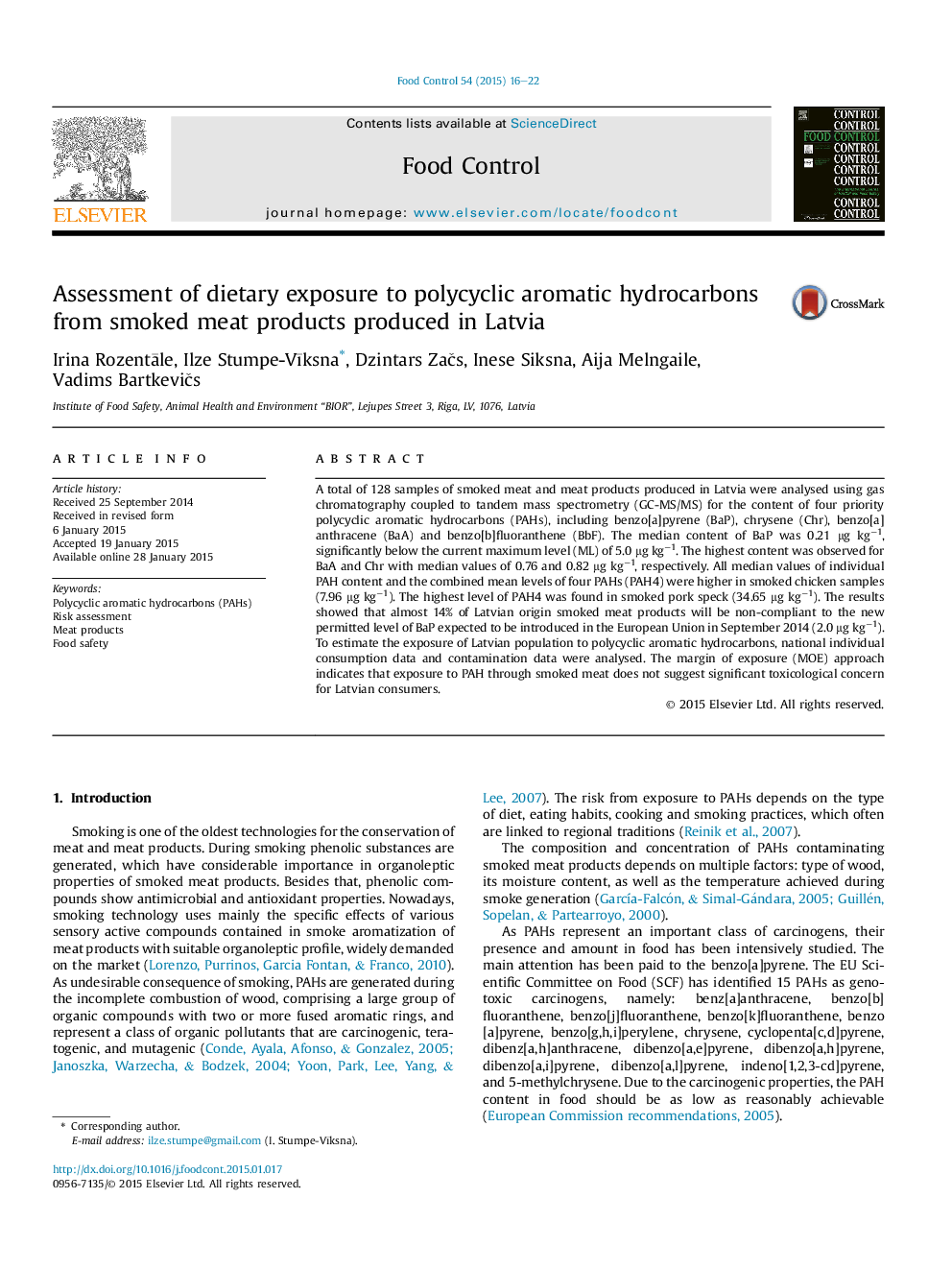| Article ID | Journal | Published Year | Pages | File Type |
|---|---|---|---|---|
| 6390812 | Food Control | 2015 | 7 Pages |
Abstract
A total of 128 samples of smoked meat and meat products produced in Latvia were analysed using gas chromatography coupled to tandem mass spectrometry (GC-MS/MS) for the content of four priority polycyclic aromatic hydrocarbons (PAHs), including benzo[a]pyrene (BaP), chrysene (Chr), benzo[a]anthracene (BaA) and benzo[b]fluoranthene (BbF). The median content of BaP was 0.21 μg kgâ1, significantly below the current maximum level (ML) of 5.0 μg kgâ1. The highest content was observed for BaA and Chr with median values of 0.76 and 0.82 μg kgâ1, respectively. All median values of individual PAH content and the combined mean levels of four PAHs (PAH4) were higher in smoked chicken samples (7.96 μg kgâ1). The highest level of PAH4 was found in smoked pork speck (34.65 μg kgâ1). The results showed that almost 14% of Latvian origin smoked meat products will be non-compliant to the new permitted level of BaP expected to be introduced in the European Union in September 2014 (2.0 μg kgâ1). To estimate the exposure of Latvian population to polycyclic aromatic hydrocarbons, national individual consumption data and contamination data were analysed. The margin of exposure (MOE) approach indicates that exposure to PAH through smoked meat does not suggest significant toxicological concern for Latvian consumers.
Related Topics
Life Sciences
Agricultural and Biological Sciences
Food Science
Authors
Irina RozentÄle, Ilze Stumpe-VÄ«ksna, Dzintars ZaÄs, Inese Siksna, Aija Melngaile, Vadims BartkeviÄs,
